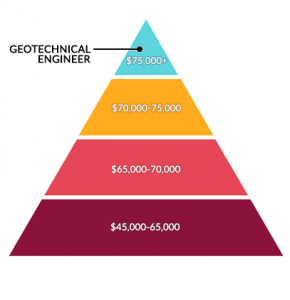The Main Principles Of Geotheta
The Main Principles Of Geotheta
Blog Article
Some Known Incorrect Statements About Geotheta
Table of ContentsWhat Does Geotheta Mean?The Basic Principles Of Geotheta The 9-Minute Rule for GeothetaSome Known Details About Geotheta
They team up with civil engineers, structural designers, engineers, and various other experts to incorporate geotechnical considerations right into the general job layout and building procedure. This calls for effective teamwork, control, and interaction to ensure that the geotechnical elements straighten with the task purposes and meet regulatory needs.Mining & Materials Design: Concepts of drilling, penetration rates, and aspects impacting the option of drilling technique. Blowing up strategies in surface area and below ground workings. Mechanical and continual methods to fragmentation, consisting of longwall shearing and fullface boring.
Integrated analysis of fragmentation and comminution operations. Supplied by: Mining & Products Engineering.
A Biased View of Geotheta
Bachelor's degree programs in civil, geotechnical, geological, and ecological engineering normally last four years and include basic education and learning courses in English, social scientific research, and the humanities, as well as programs in advanced maths, structural geology, and fluid mineralogy. (https://www.slideshare.net/ianhammond2191)
Geotechnical engineering involves the analysis of the soil and rock conditions at a certain website, and their ramifications for the development of that website. As a lot of frameworks depend on the ground for support, it is without surprise that a comprehensive understanding of the ground conditions, and the viability of structure systems, are vital to the long-term security and performance of the building or structure.
Specialising in the examination of geological developments and ground behavior, geotechnical engineers do scientific examinations and screening to recognize the impact these geological developments might have on the style and building of structure, civil and infrastructure projects. This competence is important for the style and construction of buildings, roadways, passages, dams, bridges, and water and sewage systems.
The geotechnical group at Douglas Partners consistently seek advice from with engineers, layout designers, developers, and builders to make recommendations on design and advancement proposals to make certain that the built frameworks are appropriately designed for the ground problems. The style of footing systems needs to take into consideration the weight of the framework, the capability of the ground to sustain that weight together with motion tolerances and reliable building.
Some Ideas on Geotheta You Should Know
This job is considerably streamlined by the use our Douglas Map geospatial platform that makes this information conveniently obtainable in a very easy to use internet browser interface. A geotechnical engineer will certainly direct the drilling of boreholes and examination pits to collect soil and various other examples, and additionally examine surface area features and ground direct exposures to form a geotechnical design of the subsurface conditions.
Depending on the project kind and ground problems encountered, lab screening may to name a few things examine stamina, compressibility, reactivity and/or leaks in the structure of soil and rock examples. After this information is gathered and looked at, the outcomes are used for a geotechnical design of the website, which is commonly presented as sections across the site.

A geotechnical investigation naturally can just evaluate the ground problems at the areas drilled or excavated. All-natural variations in dirt and rock problems can occur across a site and in between test areas. It is as a result good method that the geotechnical designer be preserved throughout building of the job to supply on-site confirmation that the ground conditions experienced follow the assumptions and guidance supplied in the geotechnical investigation report.
The 6-Minute Rule for Geotheta
Geotechnical engineers use their comprehensive understanding of dirt and rock to examine threat and fix problems on varied framework projectsGeotechnical design is a specialist branch of civil engineering which takes a look at the practices of earth products and the application of soil and rock technicians. Tailings Engineer. As a geotechnical engineer, you will evaluate the physical, mechanical and chemical homes of soil and rock in order to develop foundations, preserving frameworks and earthworks
Geotechnical engineering is carefully linked to and overlaps with, both design geology and ground engineering - https://dc-state.cataloxy.us/firms/dc-anacostia/geotheta.com.htm. It's feasible to be experts in geotechnics or job for a geotechnical firm but be understood as a design geologist or a ground engineer. As a geotechnical designer, you'll require to: construct and preserve relationships with clients and other specialists associated with the site, throughout each projectmaintain security criteria on website bear in mind expense ramifications when you make recommendationsstudy geological maps and airborne photos from a range of sources and from various time periodsexamine building and construction prepares to see just how viable they are based upon your understanding of the siteinvestigate dangers or geological dangers for the sitesearch for eco delicate attributes, such as garbage dump beginning to create accurate and expository ground modelsplan field investigationsdrill and analyse samples of bedrock, soil, have a peek at these guys groundwater and extra products monitor other professionals on sitesolve technical problems as they arise, such as unexpected frameworks at drill sitesmonitor conditions throughout and after construction to make certain structures are stable in the short and lengthy termadding data collected on website to your preliminary researchcreating geotechnical computations, illustrations, and 2 or three-dimensional computer designs translating the datamaking suggestions concerning the recommended use of the site

Report this page